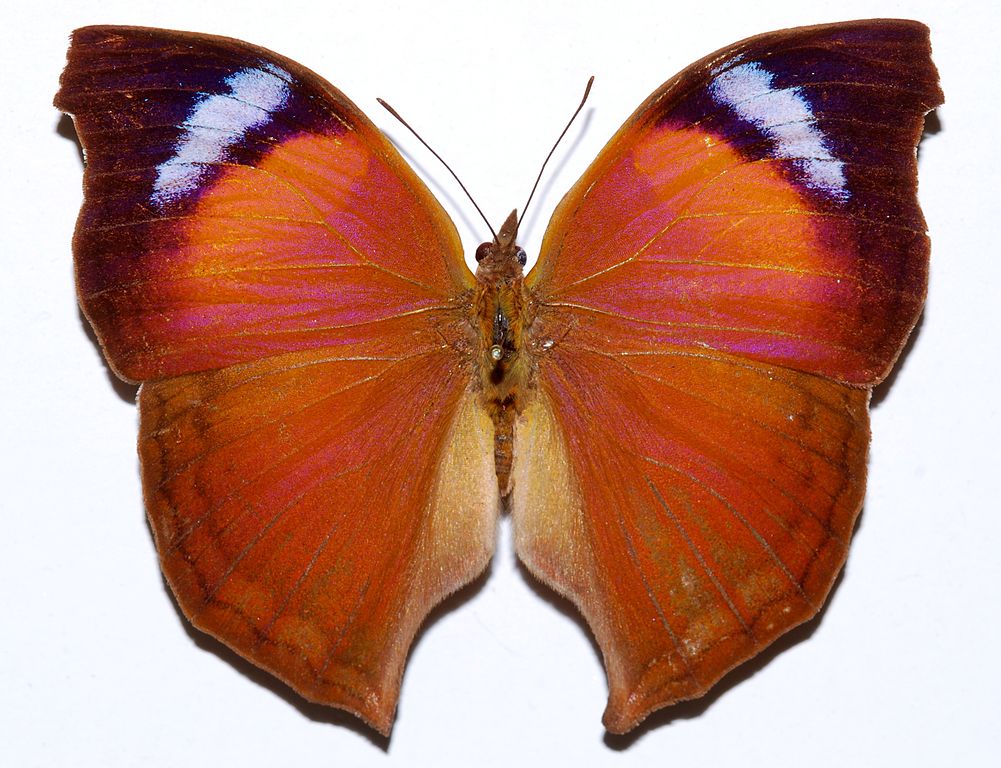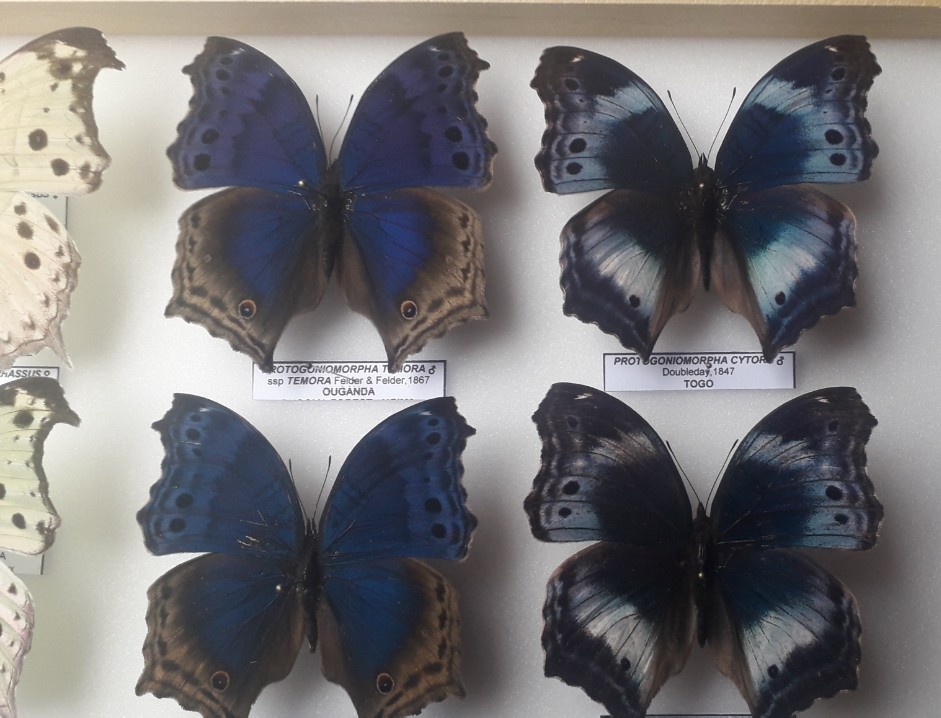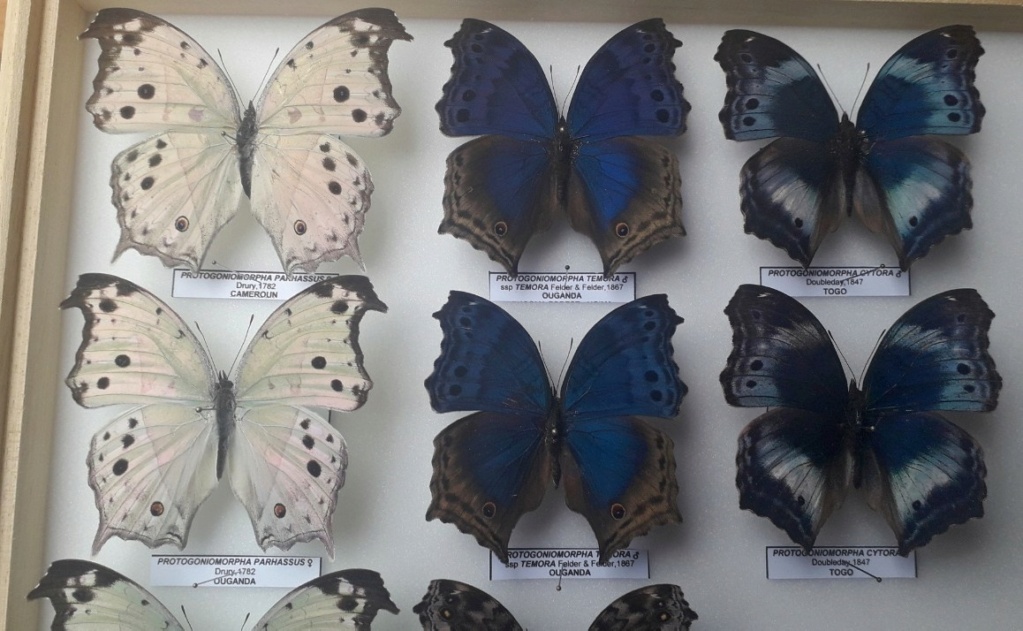|
|
Post by trehopr1 on Feb 6, 2021 20:28:29 GMT -8
A particularly striking African genus of Nymphalid butterflies is well known by collectors for having a most extraordinary wing shape (design). Commonly known as "mother of pearls" the genus Salamis has undergone some revisions these last 15 years or so. So, some former species are no longer of this genus (proper). Still, I've always liked them regardless of who may see them -- as this --or that... Below, I show one of my acquired species: Salamis anacardii duprei This particular subspecies hails from Madagascar.  Two other notable species which are probably known to most avid enthusiasts of African butterflies are the common but, striking (mother of pearl) species known as Salamis parhassus AND the truly extravagant --- Salamis temora ! As always, if you happen to like this thread and can contribute some photo's then please do so. I'm certain someone out there can regale us with their acquisitions... And, just for the record: Salamis may now be an older genus name. It seems the genus name presently used in literature as of late is: Protogoniomorpha Ha, just try to say that name 3 times in a row (fast) ! |
|
|
|
|
|
Post by livingplanet3 on Feb 6, 2021 20:43:23 GMT -8
Another Salamis from Madagascar, S. anteva -   I have a specimen of this, and anacardii and parhassus as well, but haven't yet spread them. |
|
|
|
Post by lordpandarus on Feb 7, 2021 7:44:54 GMT -8
This is my favorite one:  |
|
|
|
Post by yorky on Feb 7, 2021 8:25:14 GMT -8
Have a few cytora but only one female, they seem to have come down in price quite a lot recently.
|
|
|
|
Salamis
Feb 7, 2021 11:36:10 GMT -8
Post by lordpandarus on Feb 7, 2021 11:36:10 GMT -8
maybe the countries it comes from are more accessible to suppliers
|
|
kristof56
Junior Member
 
Posts: 24
Country: FRANCE
|
Post by kristof56 on Feb 9, 2021 13:31:56 GMT -8
Hello everyone,   Some pictures of my collection of my Protogoniomorpha parhassus (Cameroun,Ouganda),P.temora (Ouganda),P.cytora (Togo) Christophe  |
|
|
|
|
|
Post by trehopr1 on Feb 9, 2021 15:46:06 GMT -8
Very impressive selection indeed christophe !
Just lovely throughout and I really like the labels which you have made and placed beneath the specimens.
Thank you very much for adding richly to this thread dedicated to these lovely butterflies.
|
|
|
|
Salamis
Feb 10, 2021 12:40:17 GMT -8
Post by joachim on Feb 10, 2021 12:40:17 GMT -8
Thanks for posting pictures of these wonderful species
|
|
kristof56
Junior Member
 
Posts: 24
Country: FRANCE
|
Salamis
Feb 10, 2021 13:21:08 GMT -8
Post by kristof56 on Feb 10, 2021 13:21:08 GMT -8
It was with great pleasure. Christophe  |
|
mac
New Member

Posts: 3
|
Post by mac on Feb 10, 2021 13:33:22 GMT -8
I have not posted in a while, but saw this thread and thought it might be nice to see some undersides of these so put a few together, i think these are really interesting and diverse  |
|
|
|
Salamis
Feb 10, 2021 15:46:01 GMT -8
via mobile
Post by trehopr1 on Feb 10, 2021 15:46:01 GMT -8
Thank you indeed mac for sharing your picture with us.
That is certainly a very different "perspective" then what most of us typically expect when we see this genus pictured.
If I might ask, are the specimens pictured different species or are they of the species pictured (verso) on the bottom row ?
For example the Dead Leaf butterfly (Kallima inachis) offers up quite the "variation" of markings and coloration in that one species.
So much so, that one could probably fill three drawers worth of specimens of just that one species; exhibiting just some of the variation it has...
I think that would be another good idea for a thread; a thread about Kallima. Does anyone want to "run" with that idea ?
|
|
|
|
Salamis
Feb 10, 2021 16:14:15 GMT -8
Post by bobw on Feb 10, 2021 16:14:15 GMT -8
Those undersides are quite reminiscent of Memphis.
|
|
|
|
Salamis
Feb 10, 2021 16:21:06 GMT -8
via mobile
Post by Paul K on Feb 10, 2021 16:21:06 GMT -8
Kallima is a beautiful genus but it’s not that variable, it is basically a dry leaf underside. Thera two more interesting genus in terms of variety of underside ( once that occur in SE Asia ): Melanitis and Doleschallia.
I will post some photos when we finish Euploea.
|
|
|
|
Post by nomihoudai on Feb 10, 2021 18:14:47 GMT -8
Kallima inachus can be quite variable, there was about 9 ground patterns that can be mixed. I once had 50 of them from China and there was quite some variation. Species other than K. inachus are indeed not very variable and usually have a very specific pattern.
|
|
|
|
Salamis
Feb 11, 2021 6:36:21 GMT -8
via mobile
Post by Paul K on Feb 11, 2021 6:36:21 GMT -8
Kallima inachus can be quite variable, there was about 9 ground patterns that can be mixed. I once had 50 of them from China and there was quite some variation. Species other than K. inachus are indeed not very variable and usually have a very specific pattern. I only have 5 specimens of Kallima (2 species ) and I just checked their undersides and I agree they are quite variable, my memory failed me as when I was collecting them they all look like a dead leaf on the ground. They are very hard to spot, one has to really focus on area where bait was placed. Once it is disturbed it flys into a deep forest and rest on the ground, good luck to find it! Usually when it’s spotted again is too late and it takes off again to fly few meters away. |
|